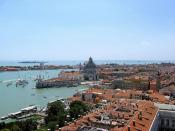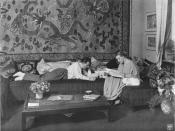Both Fritz Lang's "Metropolis" (1927) and Josef von Sternberg's "Der Blaue Engel" (1930) appeared during the height of the 'Golden Age' of the Weimar Republic. This 'Golden Age' occurred between 1923 and 1930 and was a product of many economic events. Whereas Germany had been in dire economic straits following their defeat in World War I, in 1924 the Dawes plan was introduced by the US as a means to repatriate and reduce Germany's reparation payments specified by the treaty of Versailles (1918). A currency reform in 1923 also aided in the stabilisation of the economy and Germany's industrial sector began to boom. Between 1924 and 1929 industrial production rose by approximately 40%, wages were increased 50% and the number of strikes dropped by an incredible 500%. This massive change in the German economic situation brought with it a change in ideology. Encouraged by the aid of the US and the American ideals of Fordism and Taylorism, German ideology began to move towards capitalist consumerism.
An optimistic perception of the United States arose - it was viewed as a classless society in which the possibility of success was universal. It was from this capitalist, industrialist ideology that modernity arose. Germany had begun to move away from its traditionalist ideas, rooted in the ideas of the German Romantics and what was know as 'der deutsche Sonderweg' and towards 'Zivilisation' and the French republican values of 'liberté, egalité, fraternité'.
With the creation of the first moving images in 1895, cinema had become a mass medium as early as 1914. In 1917 UFA (Universum Film AG) was created, a coalition of Germany's largest film companies and the military, which poured large amounts of money into this quickly booming industry. After the founding of the Weimar Republic, the role of cinema...


